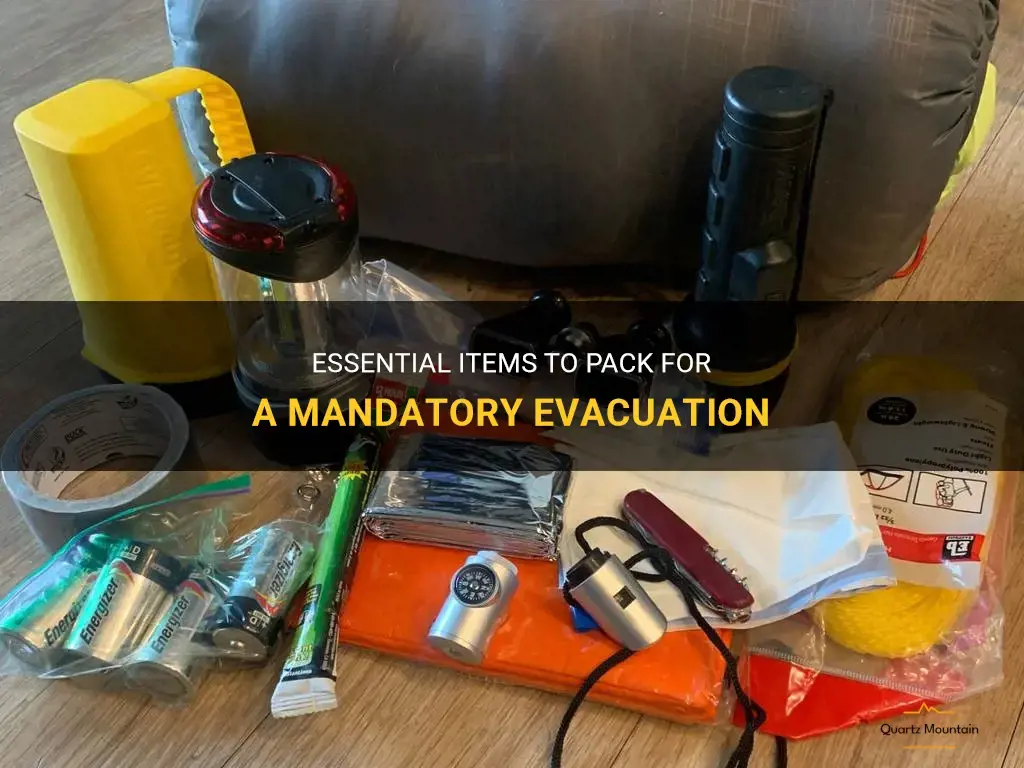
When faced with a mandatory evacuation, it is crucial to pack the right essentials that can help you navigate through uncertain times. Whether it is a natural disaster or any other emergency, having the necessary items can make a world of difference in ensuring your safety and comfort. From food and water supplies to essential documents and personal hygiene products, this comprehensive list of items to pack for a mandatory evacuation will help you prepare in the best possible way.
What You'll Learn
- What are the essential items to pack for a mandatory evacuation?
- How much clothing and personal hygiene items should I pack for a mandatory evacuation?
- Are there any specific documents or paperwork that I should bring with me during a mandatory evacuation?
- What types of non-perishable food and water should I pack for a mandatory evacuation?
- Are there any special considerations or items that I should pack for my pets during a mandatory evacuation?

What are the essential items to pack for a mandatory evacuation?
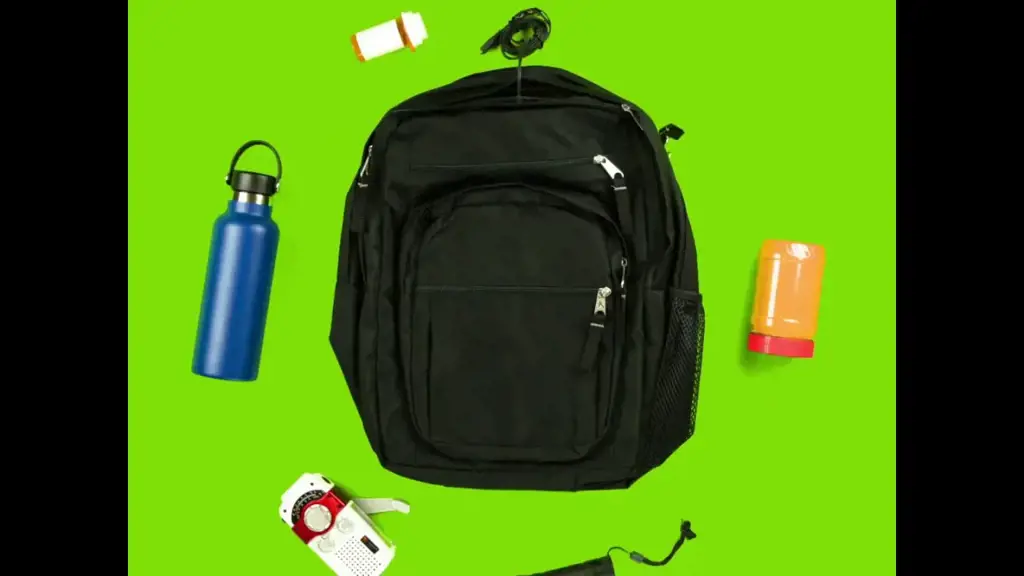
Being prepared for an emergency evacuation is crucial for your safety and well-being. Whether it's due to a natural disaster, such as a hurricane or wildfire, or any other emergency situation, having a well-thought-out packing list can make a significant difference. In this article, we will discuss the essential items to pack for a mandatory evacuation, ensuring that you are adequately prepared to face any challenges that may arise.
Important documents:
Gather essential documents such as identification cards, passports, birth certificates, insurance policies, and any other crucial paperwork. Place them in a waterproof and fireproof container or bag to keep them safe during the evacuation.
Emergency contact information:
Compile a list of emergency contacts, including family members, friends, doctors, and insurance providers. Have this information readily accessible, either on your phone or in a printed format.
First aid kit:
Include a well-stocked first aid kit with bandages, antiseptic wipes, over-the-counter medications, and any prescription medications you or your family members may need. Make sure to check the expiration dates regularly and replenish supplies as necessary.
Non-perishable food and water:
Pack at least a three-day supply of non-perishable food items such as canned goods, energy bars, and dried fruits. Additionally, include enough bottled water to sustain each person for a minimum of three days. Consider packing a manual can opener and reusable utensils as well.
Clothing and personal hygiene items:
Pack a sufficient amount of clothing for each family member, including underwear, socks, and sturdy shoes suitable for walking long distances. Don't forget personal hygiene items such as toothbrushes, toothpaste, soap, and toilet paper.
Portable phone charger and batteries:
Having a portable phone charger will ensure you can stay connected with loved ones and emergency services. Additionally, packing extra batteries for flashlights, radios, and any other battery-powered devices is essential.
Important keepsakes and sentimental items:
Consider including photographs, sentimental tokens, or irreplaceable items that hold significant meaning for you and your family. These items may provide comfort and emotional support during a difficult time.
Cash and credit cards:
Make sure to have enough cash in small denominations, as well as credit cards, in case you need to purchase essential items or services during the evacuation. ATMs and credit card payment systems may be affected during emergencies.
Emergency shelter supplies:
If you are unsure where you will be staying during the evacuation, consider packing additional items such as sleeping bags, blankets, and a tent or tarp for temporary shelter. Be prepared for various weather conditions.
Important pet supplies:
If you have pets, don't forget to pack their essentials, including food, water, medications, toys, and bedding. Ensure their crates or carriers are easily accessible and easily transportable.
Entertainment and comfort items:
To keep morale high during a stressful time, include items such as books, board games, playing cards, or other activities that can provide some distraction and comfort.
Remember to regularly review and update your evacuation kit. Check expiration dates on food, medications, and batteries, and replace them as necessary. It's also essential to have a plan in place for where you will go during an evacuation and to stay informed about any updates or changes in the situation.
In conclusion, a well-prepared evacuation kit is vital during times of mandatory evacuations. By including important documents, emergency supplies, personal items, and pet essentials, you can be better equipped to face any emergency situation and ensure the safety and well-being of you and your family. Stay safe!
What to Pack for a Norwegian Cruise: Essential Items for an Unforgettable Trip
You may want to see also

How much clothing and personal hygiene items should I pack for a mandatory evacuation?
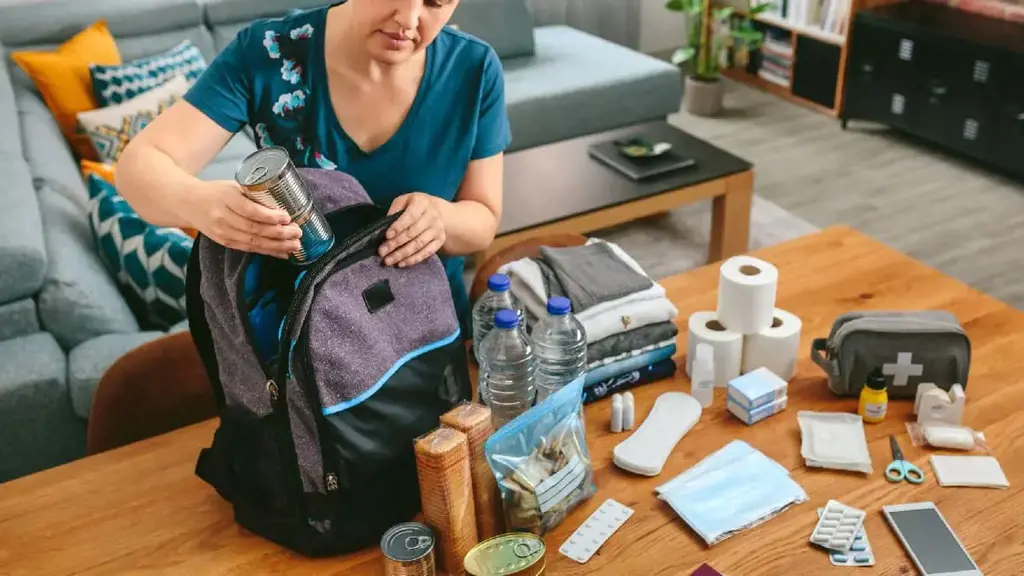
When faced with a mandatory evacuation, it is essential to pack essential items, including clothing and personal hygiene items, in order to ensure your comfort and well-being during the evacuation period. The amount of clothing and personal hygiene items you should pack will vary depending on the length of the evacuation and any specific needs you may have. In this article, we will provide a general guideline to help you determine the appropriate amount to pack.
- Consider the length of the evacuation: The length of the evacuation will greatly impact the amount of clothing and personal hygiene items you should pack. If the evacuation period is expected to be short (a few days), you will need fewer items compared to a longer evacuation period (several weeks).
- Assess your daily needs: Start by estimating your daily clothing and personal hygiene needs. Consider factors such as the weather conditions, the activities you are likely to engage in during the evacuation, and any special requirements you may have. This will help you determine the minimum number of clothing items and personal hygiene products you need to pack.
- Pack multiple sets of clothing: It is important to pack enough clothing to last you through the duration of the evacuation. Plan for at least one outfit per day, including underwear, socks, and sleepwear. Additionally, pack appropriate clothing for different weather conditions, such as jackets, hats, and rain gear if necessary. Aim to pack versatile clothing items that can be mixed and matched for different outfits.
- Don't forget about personal hygiene: Personal hygiene is crucial, especially in emergency situations. Pack travel-sized toiletries such as toothpaste, toothbrush, soap, shampoo, and deodorant. Consider any specific personal hygiene items you may require, such as contact lens solution or feminine hygiene products. It is advisable to pack enough of these items to last through the entire evacuation period.
- Consider laundry options: If the evacuation period is longer, you may need to wash your clothes. Research the availability of laundry facilities at your evacuation location and pack accordingly. Pack a small amount of laundry detergent and consider bringing a portable clothesline for air drying.
Examples:
- For a short evacuation period of a few days, you may pack 3-4 outfits, including underwear, socks, and sleepwear. You can pack travel-sized toiletries that will last you through the evacuation period.
- For a longer evacuation period of several weeks, you may need to pack 7-10 outfits, taking into account weather conditions and laundry options at your evacuation location. Plan for enough personal hygiene items to last you through the entire period, including buying larger-sized toiletries if necessary.
In summary, the amount of clothing and personal hygiene items you should pack for a mandatory evacuation depends on the length of the evacuation and your daily needs. It is important to pack enough clothing to last through the entire period, considering different weather conditions and laundry options. Personal hygiene items should be packed in travel-sized containers, with enough to last the entire evacuation. By carefully assessing your needs and considering the duration of the evacuation, you can ensure your comfort and well-being during this challenging time.
Essential Packing List for a Memorable Trip to Banff in April
You may want to see also

Are there any specific documents or paperwork that I should bring with me during a mandatory evacuation?
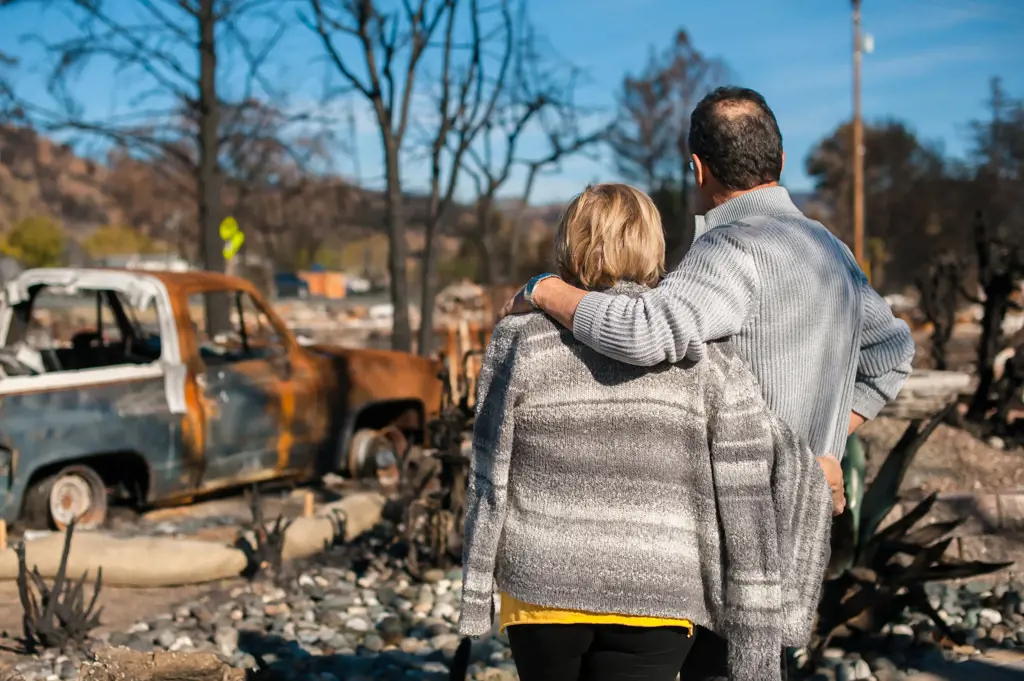
When faced with a mandatory evacuation, it is crucial to gather important documents and paperwork to ensure your safety and well-being. These documents can provide critical information and assistance during and after the evacuation. While the specific documents may vary depending on your situation, there are some essential items you should consider bringing with you.
- Identification Documents: Bring your driver's license, passport, or any other government-issued identification to establish your identity. These documents will be necessary for travel and may be required to access certain services or resources.
- Insurance Documents: Gather copies of your health insurance, car insurance, and homeowner's or renter's insurance policies. These will provide information about coverage and contact information for filing claims in the event of damage or loss.
- Medical Information: Bring any pertinent medical information such as prescriptions, medical records, or lists of allergies or conditions. This information will be crucial in ensuring you receive the necessary care and medications during the evacuation.
- Financial Documents: Gather important financial documents such as bank account information, credit card statements, and a list of emergency contact numbers for your financial institutions. Having this information readily available will help you manage your finances and contact your bank in case of any issues.
- Contact Information: Prepare a list of emergency contact numbers for your family members, friends, and neighbors. Include the contact information for your doctor, veterinarian, and any other important individuals or services you may need to reach during the evacuation.
- Property Documentation: Collect copies of important property documents such as deeds, leases, and proof of ownership for valuable items. These documents will be helpful for insurance purposes and verifying your identity as the rightful owner of your property.
- Personal Records: Consider bringing important personal records such as birth certificates, marriage licenses, or social security cards. These documents can be crucial for establishing your identity and accessing services or benefits after the evacuation.
- Important Legal Documents: Gather any important legal documents, such as wills, power of attorney forms, or guardianship papers. These documents can protect your assets and ensure your wishes are followed in case of an emergency.
- Digital Backup: In addition to physical copies of these documents, it is also wise to have electronic copies stored on a portable drive or secured in cloud storage. This way, even if the physical copies are lost or damaged, you can still access the information online.
- Emergency Kit: Finally, make sure to have a well-stocked emergency kit containing essentials such as a first aid kit, non-perishable food, water, flashlights, batteries, and any necessary medications. This kit will provide you with the basics you need during the evacuation and in the immediate aftermath.
Remember, every emergency situation is unique, so it is important to tailor your preparations to your specific needs and circumstances. Regularly review and update your documents and ensure they are easily accessible. Being prepared will not only help you during the evacuation but also in the recovery process after the incident.
Essential Items to Pack for an Unforgettable Trip to Egypt and Jordan
You may want to see also

What types of non-perishable food and water should I pack for a mandatory evacuation?
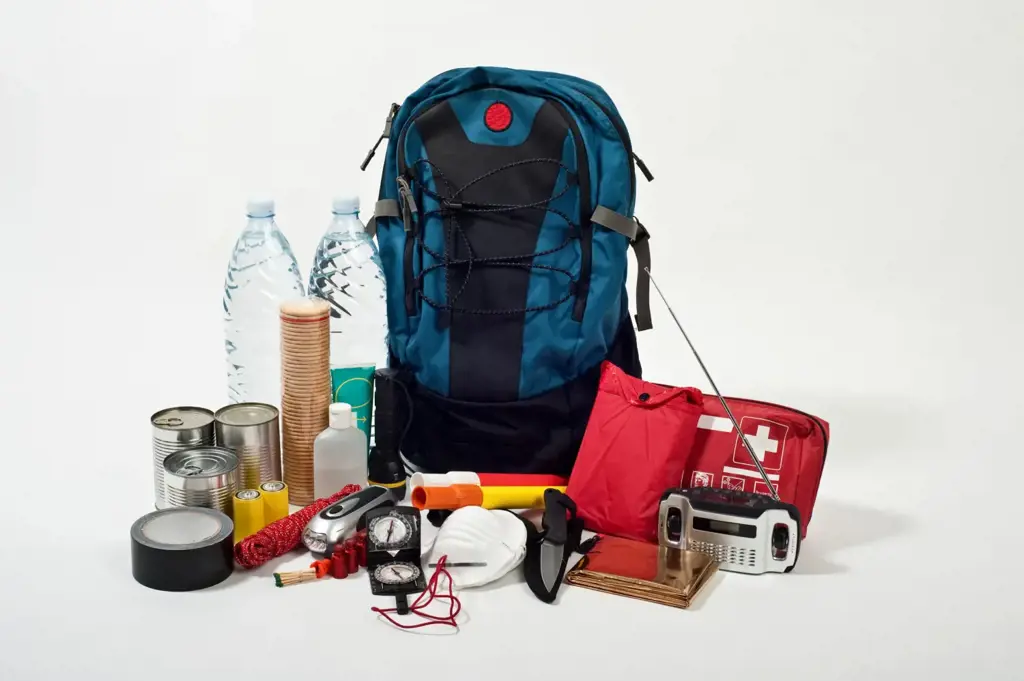
In the face of a mandatory evacuation, it is crucial to be prepared with essential non-perishable food and water items. These supplies will sustain you and your family for a few days or even longer until it is safe to return home or find other sources of sustenance. As non-perishable items can be stored without refrigeration and have a long shelf life, they are ideal for emergencies. Let's take a look at what types of non-perishable food and water you should pack for a mandatory evacuation.
- Water: Clean drinking water is the most important item to have in abundance during an evacuation. The general rule of thumb is to pack one gallon of water per person per day. If you have limited storage space or need to conserve weight, consider packing water purification tablets, a portable water filter, or a collapsible water bottle to refill at safe water sources.
- Canned Goods: Canned foods are convenient, have a long shelf life, and provide essential nutrients. Variety is essential when selecting canned goods, as it helps maintain a balanced diet. Pack a mix of options such as canned vegetables, fruits, proteins (tuna, chicken, and beans), soups, and stews. Look for low-sodium versions when available to prioritize your health.
- Dry Goods: Dry goods are excellent options for evacuation kits as they are lightweight and don't require refrigeration. Consider packing items like rice, pasta, oats, granola bars, crackers, nuts, peanut butter, and dried fruit. These items can be easily combined with canned goods to create satisfying meals.
- Meal Replacement Bars: Storing a few meal replacement bars in your emergency kit provides a quick and easy source of nutrition. Opt for bars that are high in protein, fiber, and vitamins to keep you energized and satiated.
- Baby Food and Formula: If you have infants or young children, be sure to pack an adequate supply of baby food and formula. Look for non-perishable options that can be easily prepared, or pack powdered formula and reconstitute it with water as needed.
- Snacks: While not essential for survival, snacks can provide comfort and boost morale during stressful times. Pack a selection of snacks such as energy bars, trail mix, jerky, and cookies. Ensure you choose options that won't melt or spoil easily.
- Utensils and Can Opener: Don't forget to include a manual can opener and disposable utensils in your evacuation kit. These tools will allow you to open canned goods and eat your non-perishable meals.
- Consider Special Dietary Needs: If you or someone in your family has special dietary needs or food allergies, ensure you pack suitable non-perishable options. Look for gluten-free, dairy-free, nut-free, or vegetarian products to accommodate specific dietary restrictions.
It's important to regularly check the expiration dates of your non-perishable items and rotate them out to maintain freshness. Additionally, consider storing your food and water supplies in a durable, waterproof container that is easy to transport. Keep your evacuation kit in a readily accessible place in case you need to evacuate quickly.
Lastly, it is recommended to periodically review and update your emergency supplies to ensure they are up-to-date and suitable for your family's needs. By being prepared with non-perishable food and water, you can help ensure the well-being and safety of yourself and your loved ones during a mandatory evacuation.
What to Pack for a Rehab Retreat in Turtle Creek: Your Essential Checklist
You may want to see also

Are there any special considerations or items that I should pack for my pets during a mandatory evacuation?
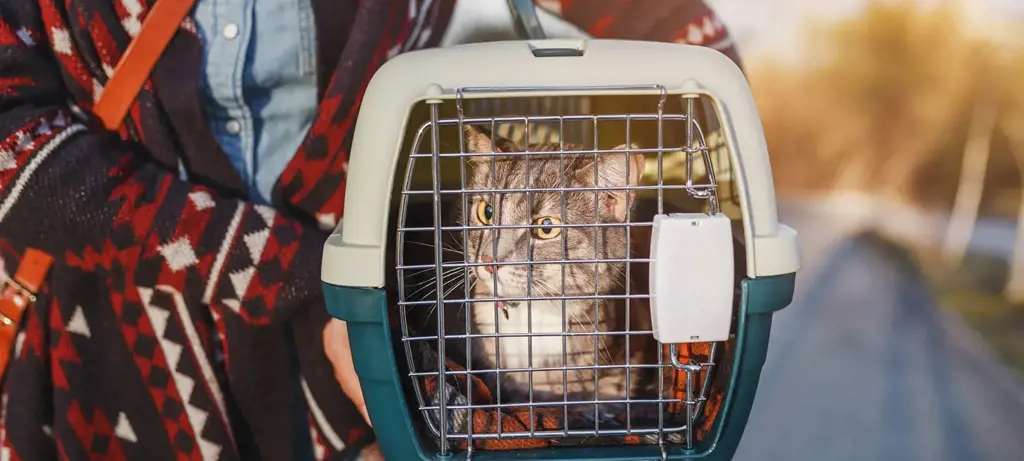
As a responsible pet owner, it is important to be prepared for any emergency situation, including mandatory evacuations. When preparing your pet for an evacuation, there are a few special considerations and items that you should pack to ensure their safety and well-being.
- Identification and essential documents: Make sure your pet has an identification tag with your contact information and a current photo. It is also a good idea to have copies of their vaccination records, medical history, and any necessary permits or licenses.
- Food and water: Pack enough food and water for your pet to last at least three days. It is best to choose canned or dry food that has a long shelf life and won't spoil easily. Don't forget to pack a can opener and a sturdy bowl for feeding and watering your pet.
- Medications and medical supplies: If your pet requires any medications, be sure to pack enough for the duration of the evacuation. It is also a good idea to have a basic first aid kit that includes items such as bandages, antiseptic solution, and tweezers.
- Comfort items: Familiar items can help reduce the stress and anxiety your pet may experience during an evacuation. Pack their favorite toy, blanket, or bed to provide them with a sense of comfort and security.
- Leash, harness, and carriers: It is important to have a secure leash and harness for your pet in case they need to be walked or transported. If you have cats or smaller pets, a sturdy carrier is essential for their safety and easy transport.
- Waste disposal supplies: Pack plastic bags and/or cat litter for waste disposal. Having a litter box for cats or small animals can help keep them comfortable during the evacuation.
- Veterinary information: Make sure to have the contact information for your regular veterinarian as well as emergency veterinary hospitals in the area you are evacuating to. Knowing where to seek veterinary care in case of emergencies is crucial.
- Comfortable and weather-appropriate clothing: Depending on the weather, you may need to pack additional items such as a jacket, boots, or rain gear for your pet. While not all pets will need clothing, some dogs with short coats or small animals may benefit from an extra layer of protection.
- Sanitation supplies: Bring cleaning supplies such as disinfectant wipes or sprays to keep your pet's living space clean and sanitary. This is especially important if you are staying in temporary accommodations.
- Updated contact information: Ensure that you have updated contact information for any pet-friendly accommodations or shelters that you plan to utilize during the evacuation. It is also a good idea to have the contact information for local animal control in case you get separated from your pet.
Remember, the safety and well-being of your pet should always be your top priority during an evacuation. By being prepared and packing these essential items, you can ensure that your furry friend stays safe and comfortable during this stressful time.
The Ultimate Guide to Packing for a January Trip to San Diego
You may want to see also
Frequently asked questions
The most essential items to pack for a mandatory evacuation include important documents such as birth certificates, passports, and insurance papers, as well as any necessary medications. It's also important to pack a change of clothes, toiletries, and enough non-perishable food and water to last for at least three days. Additionally, it's a good idea to bring a flashlight, batteries, a portable phone charger, and a first aid kit.
It's generally advised not to bring valuable items with you during a mandatory evacuation. It's best to prepare yourself for the possibility of losing or leaving these items behind. However, if you have small, easily portable valuables such as jewelry or important family heirlooms, it may be wise to take them with you in a secure and waterproof container.
When packing for a mandatory evacuation with pets, make sure you have enough food, water, and medication to last for at least three days. Bring any identification or microchip information for your pets as well as their carriers, leashes, and an extra collar or harness. Comfort items such as blankets or toys can help reduce stress for your pets during the evacuation. It's also important to have a plan in place for where you will bring your pets if you are unable to bring them with you to a shelter.
In addition to the essential items mentioned earlier, there are a few other items you may want to consider packing for a mandatory evacuation. These include a battery-powered or hand-crank radio to stay informed about the situation, cash or traveler's checks, a basic toolkit, and any necessary baby supplies such as diapers and formula. It's also a good idea to have a list of important phone numbers and addresses in case cell service is limited.







